EXHIBITION OVERVIEW
Winner of the 2023 Gradiva Award - Art.
Featuring photographs, videos, and archival materials, Michal Heiman: Chronically Linked explores the intersections of psychoanalysis, asylums, and oppression through recent projects, including Michal Heiman Tests (1997-2012); Radical Link: A New Community of Women, 1855-2021 (2013-present); and Hearing (2020).
The latter projects found their genesis in 2013 when Heiman, doing research for another project, encountered a photograph of a young woman taken around 1855 at the Surrey County Lunatic Asylum in London by Dr. Hugh Welch Diamond. A few years later, Heiman found a similar image of Maria Dominica D’Alberto, who Oreste Bertani photographed at the San Servolo Asylum in Venice in January 1880. Heiman recognized a version of herself in both images, thus setting her on a path to recontextualize the photographs through her artistic process and research. In particular, she considers the political, cultured, gendered, and psychic conditions of “return” -- both returns to the past and rights of return.
Heiman also explores her life through psychoanalysis, importing diagnostic and psychoanalytic methods into her own artistic practice. Her Michal Heiman Tests (M.H.T.s) are modeled after the Thematic Apperception Test (TAT), devised in the 1930s and still used today, in which clients interpret cards featuring ambiguous figures. Heiman’s conceptual works, themselves grounded in the practice of photography, are composed of archival detritus salvaged by the artist.
Biography
Michal Heiman (she/her) is an interdisciplinary artist, (art)ivist, curator, and theoretician whose work inhabits the spaces between art and psychoanalysis, photography and diagnosis, theory and praxis. As installations, video, sound, photography, performance, and archival displays, her work has been shown in venues such as the University of Melbourne Museum of Art, Documenta X (Kassel), Le Quartier (Quimper), The Jewish Museum (New York), The Museum of Modern Art (Saitama City), The Van Abbe Museum (Eindhoven), Museum Ludwig (Cologne), the American University Museum (Washington DC), Hearing (2020) at the American Jewish University (Los Angeles), and Michal Heiman: Chronically Linked (2022) at Binghamton University (State University of New York). Working with case studies by renowned psychoanalysts, Michal Heiman has presented several lecture films, Father not Uncle (Freud/Katharina), based on a Freud case study with Katharina, Through the Visual, A Tale of Art that Attacks Linking (1917-2008), analyzing the British psychiatrist and psychoanalyst Wilfred Bion’s drawings and photographs from World War I, and Reality and Playing 1 & 2, based on a case study by the English psychoanalyst D.W. Winnicott, which are now a part of the Winnicott Trust in London. Heiman brings her critical voice to bear on issues of neglected histories and archives, challenging art and photography’s therapeutic potential and its role in the struggle for human rights.



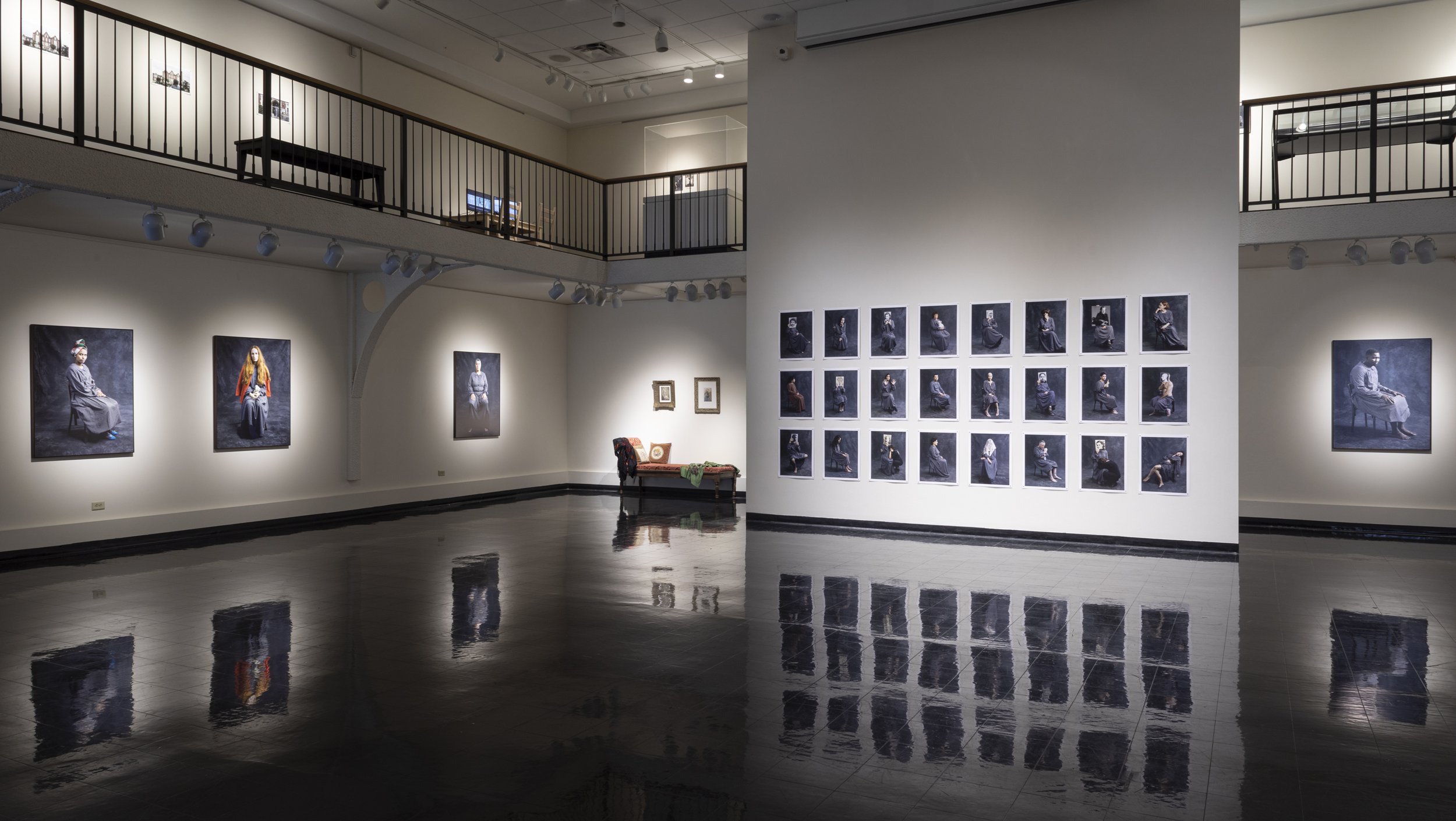











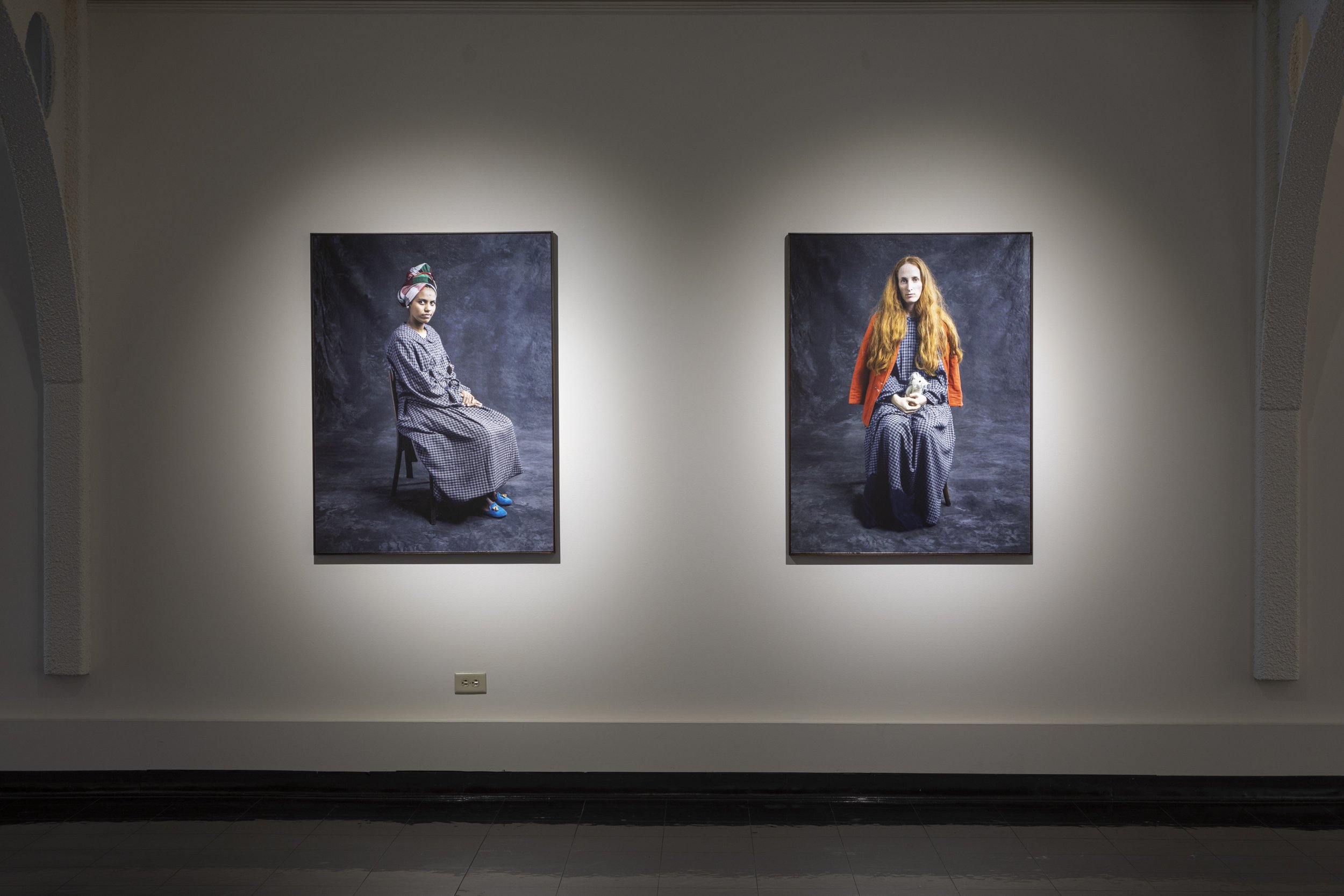
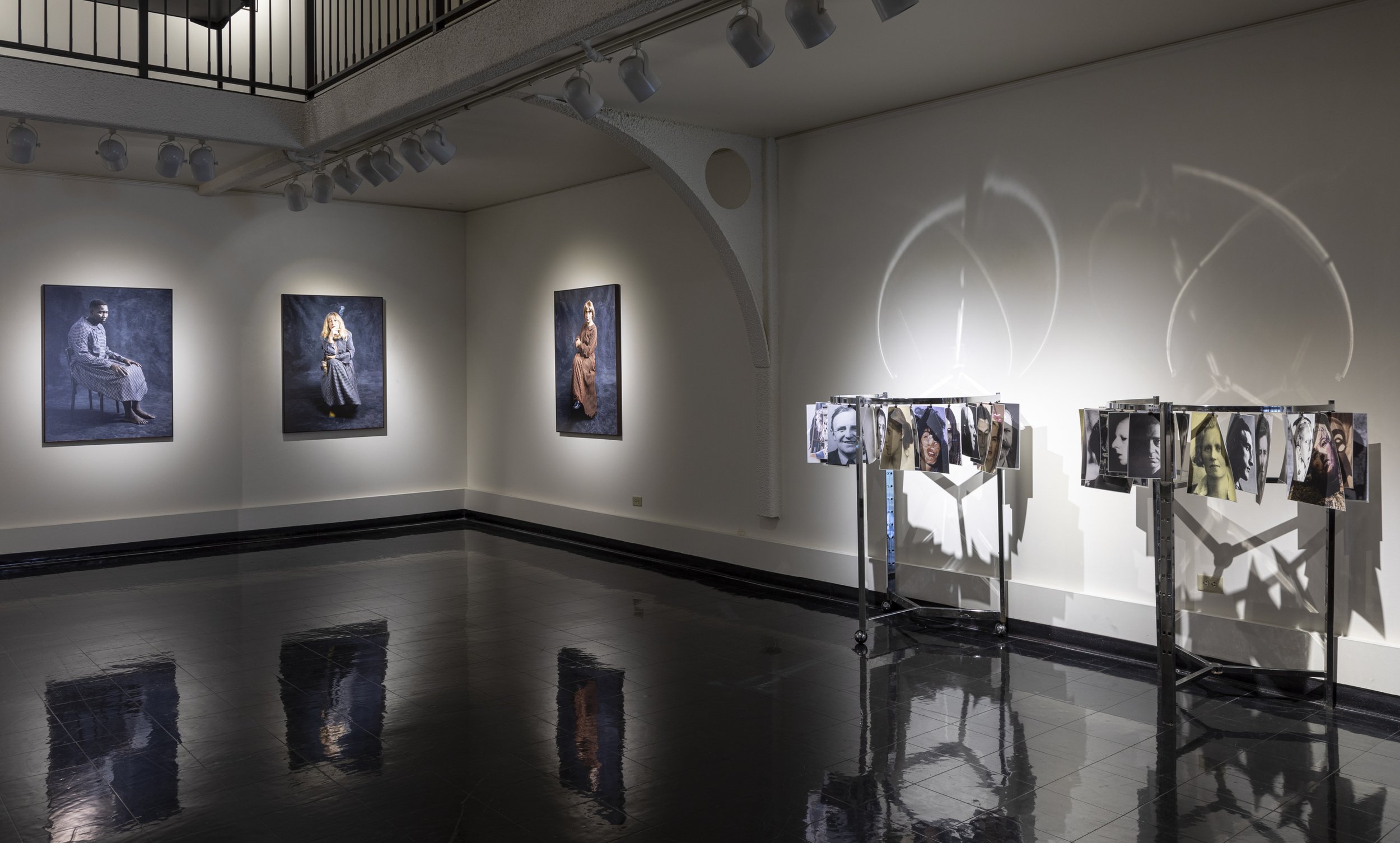






















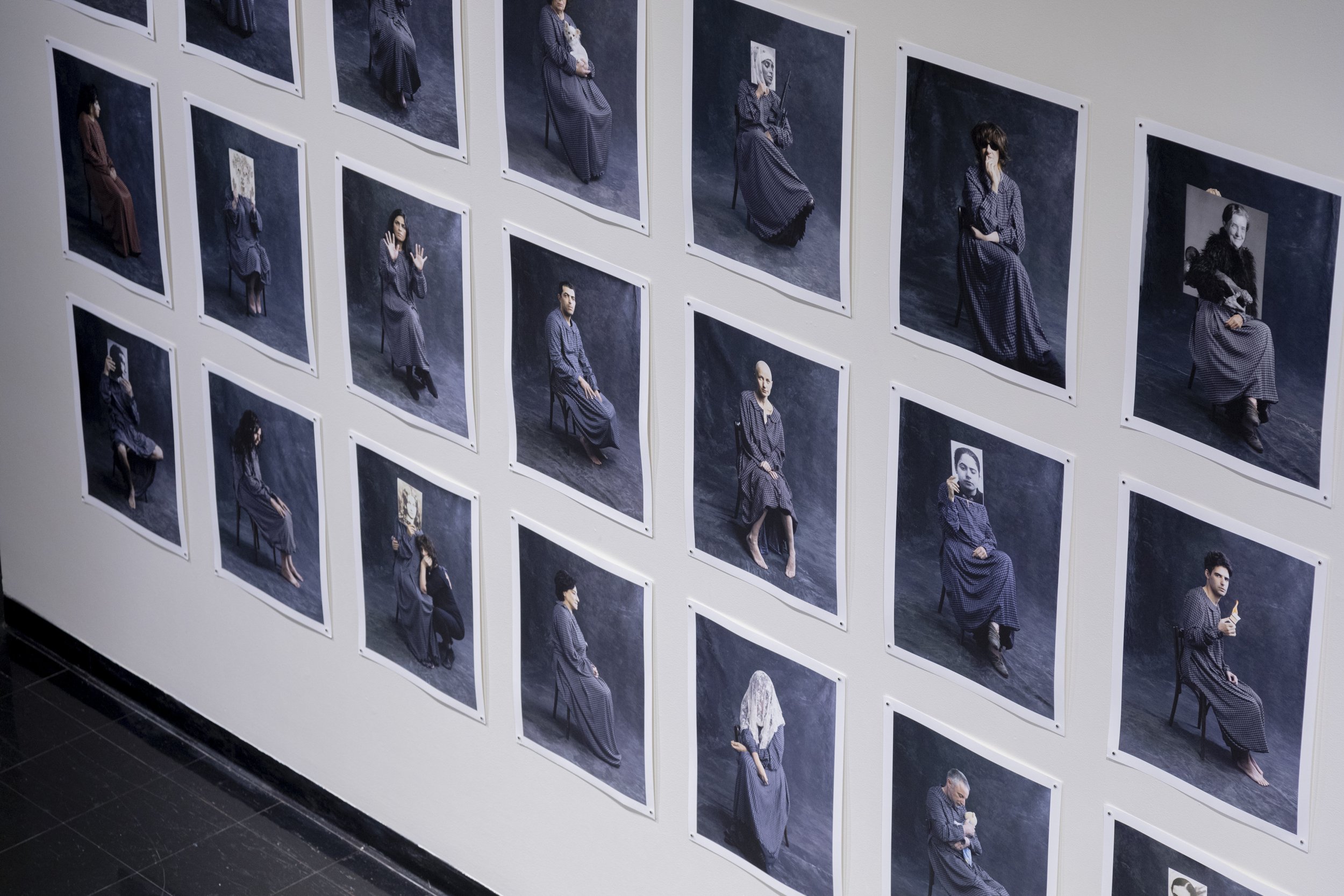






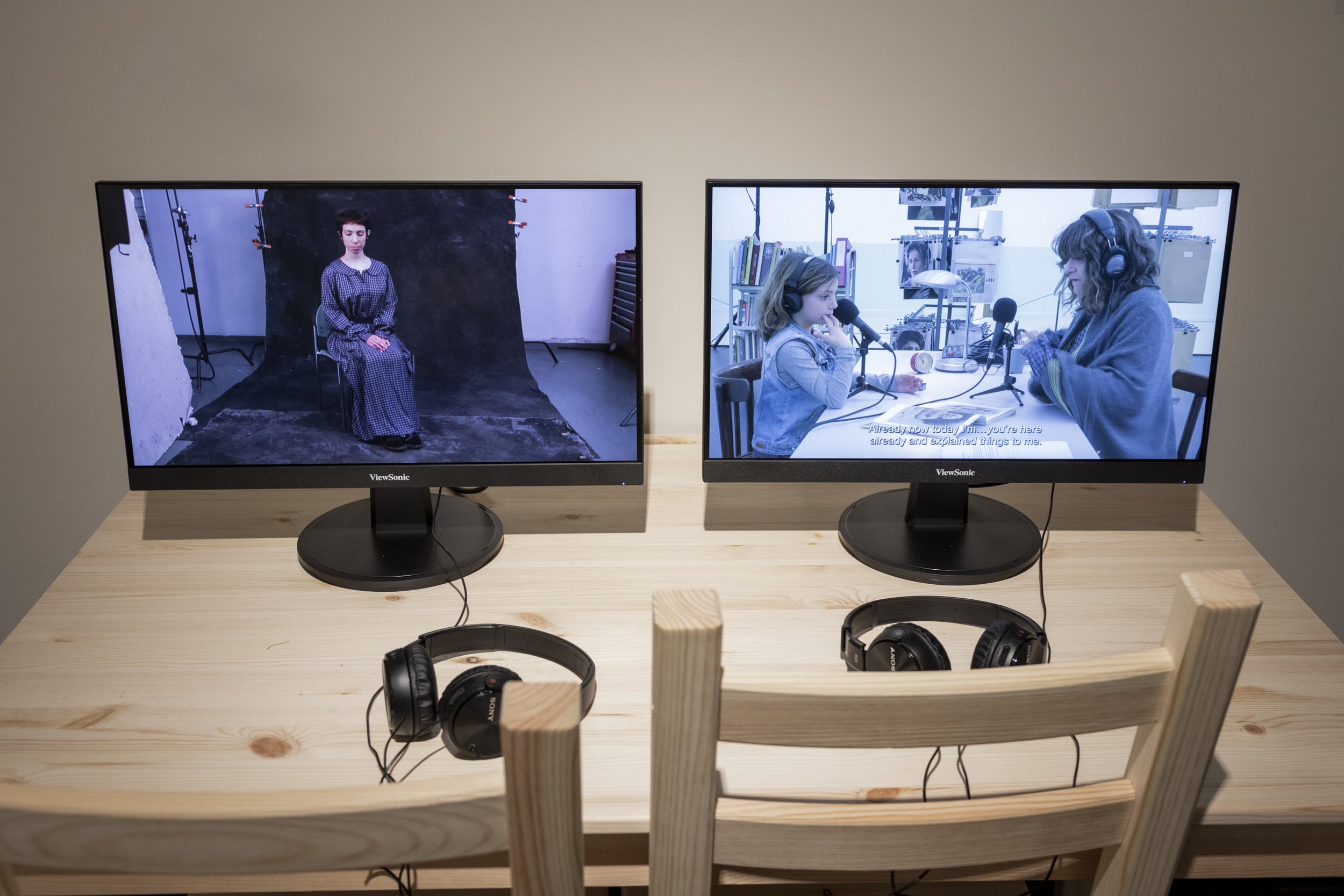
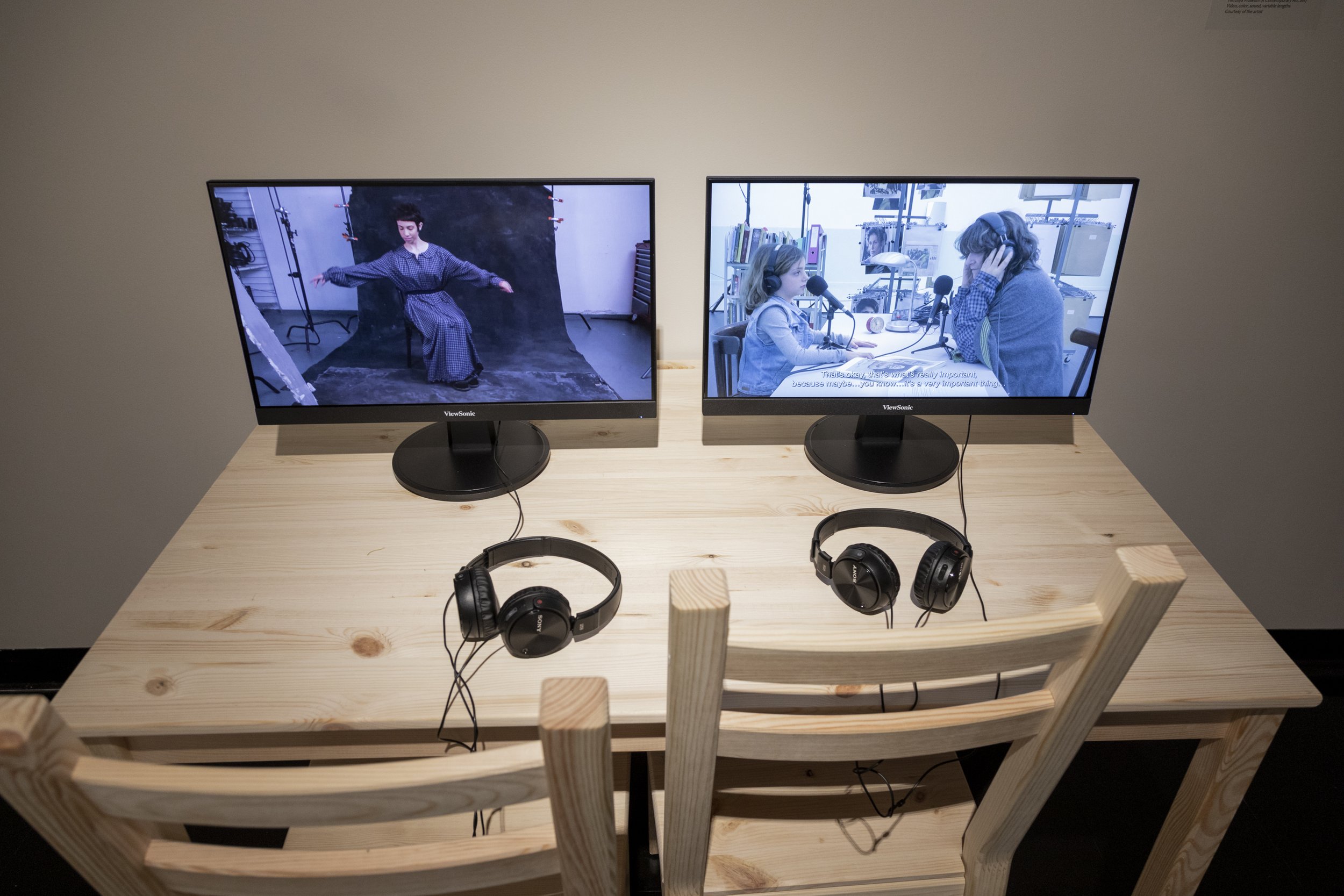
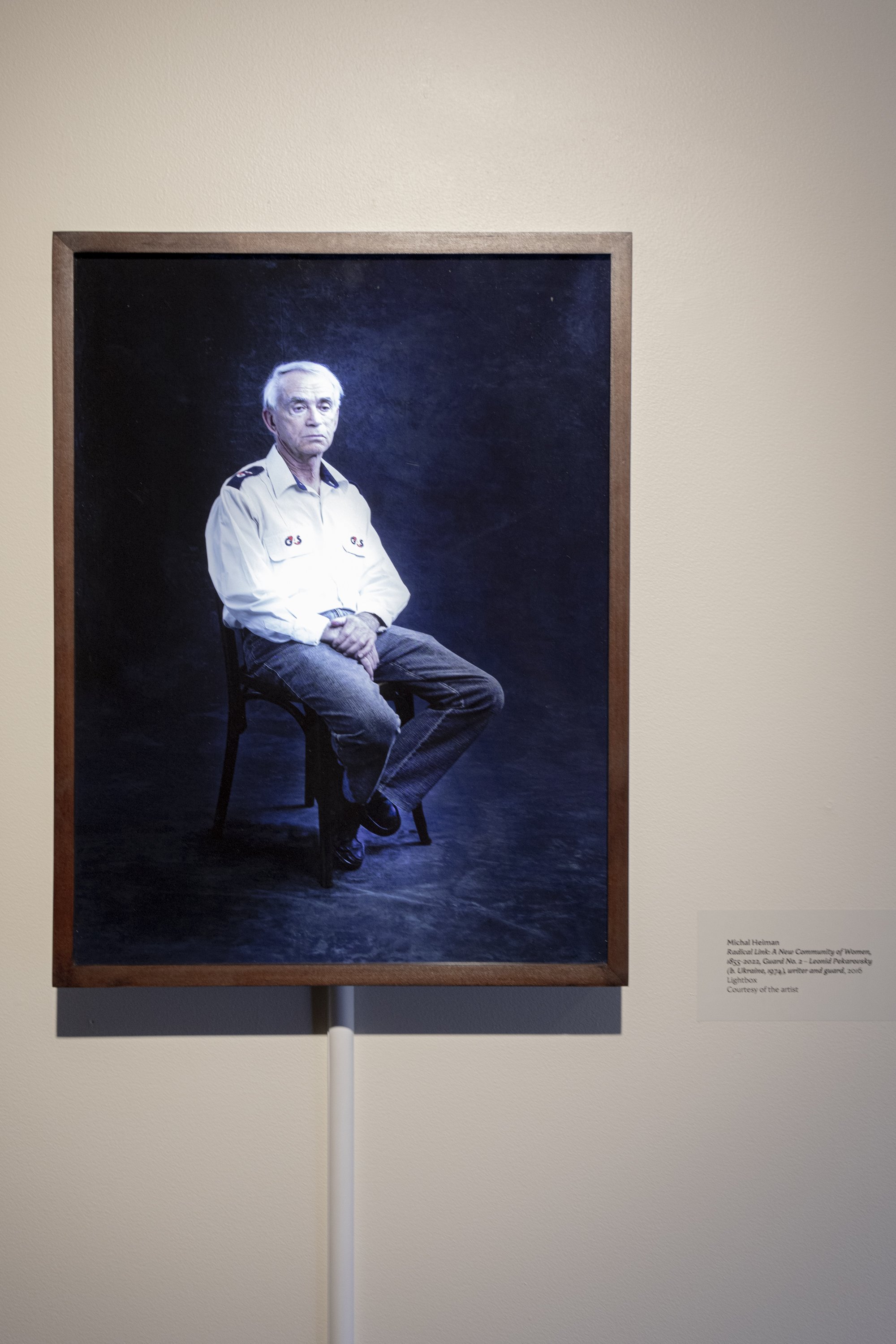
Installation photographs courtesy of Marc Newton
PROGRAMMING
Michal Heiman + John Tagg in conversation
Michal Heiman is an artist, curator, member of the Tel-Aviv Institute for Contemporary Psychoanalysis, theorist, and activist whose work inhabits the spaces between art and therapy, photography and diagnosis, theory and praxis. As installations, video, sound, photography, performance, and archival displays, her work has been shown in venues such as the University of Melbourne Museum of Art, Documenta X (Kassel), Le Quartier (Quimper), The Jewish Museum (New York), The Museum of Modern Art (Saitama City), The Van Abbe Museum (Eindhoven), Museum Ludwig (Cologne), the American University Museum (Washington DC), and the American Jewish University (Los Angeles).
John Tagg looks at forms of photographic practice that were not previously part of the History of Photography and writes about photography not as a self-contained medium but as a complex apparatus whose social effects and effects of meaning are multiple and diverse. His interests extend to the ways in which we construct histories of cultural technologies and visual regimes and to the range of theoretical debates that, since the 1970s, have transformed the business of art history. His publications, which have been translated into more than fifteen languages, include The Burden of Representation: Essays on Photographies and Histories (1988), Grounds of Dispute: Art History, Cultural Politics, and the Discursive Field (1992), and The Disciplinary Frame: Photographic Truths and the Capture of Meaning (2009).
Elizabeth Mozer, The Asylum Project selections + linkages
Elizabeth Mozer’s one-woman play The Asylum Project is based on stunning true events that weave together the lives of a Polish immigrant, psychiatric hospital patients, and a woman following the clues of her past. Their experiences are intimately connected to the Binghamton State Hospital in upstate New York and unfold over the course of six decades. Drawn from personal accounts, historical documents, and imaginings, these five individuals are brought to life in this movement infused fifty-five minute solo drama. Their remarkable stories once silenced are now given voice. Mozer performed a few select characters from the play in the gallery, surrounded by Michal Heiman: Chronically Linked. These performances will be joined with reflections on her practice, the play's links to Heiman's practice, and the history of the Binghamton State Hospital.
Elizabeth Mozer (Associate Professor, Theatre) is a director, actress, deviser (theatre maker), and educator, with a specialization in movement. Mozer performed The Asylum Project in NYC, Montreal, Boulder, and throughout New York, including performances at The Cherry Arts in Ithaca. In 2019, Mozer was selected to perform The Asylum Project at the International United Solo Theatre Festival in NYC where it received the award for Best Drama.


Photographs courtesy of Elizabeth Mozer
Michal Heiman + Elizabeth Mozer in conversation
EXHIBITION MATERIALS
Exhibition poster (designed by Alessandro Segalini)
Exhibition trifold (designed by Alessandro Segalini)
Exhibition interpretive text + checklist
Earlier project iterations + Resources
Exhibition reviews: Radical Link: The New Community of Women, 1855-2020 (American University Museum at the Katzen Arts Center)
Radical Link: A New Community of Women, 1855–2020/I Encountered My Gaze in Venice, 1880–2020
Radical Link: A New Community of Women, 1855–2020/I Encountered My Gaze in Venice, 1880–2020 (text only)
Omri Herzog, “A Report to an Academy: On Michal Heiman’s Through the Visual” A Tale of Art that Attacks Liking, 1917-2008”
Danielle Knafo, “Creative and Clinical Transformation of Trauma: Private Pain in the Public Domain”
Roi Boshion, “Michal Heiman Tests”
Michal Heiman, “Lamentation: Do You Remember Orlando, Mother?”
Sander Gilman, “Images, ‘real’ People, and the Asylum”
Sharon Sliwinski, “The Woman Who Walks Through Photographs”
Unconventional Care: The Mission of the NYS Inebriate Asylum
A small, related exhibition, Unconventional Care: The Mission of the NYS Inebriate Asylum, was co-currently on view in the Lower Galleries, which considered the histories of Binghamton’s asylum through the contemporary photographs of A.D. Wheeler.


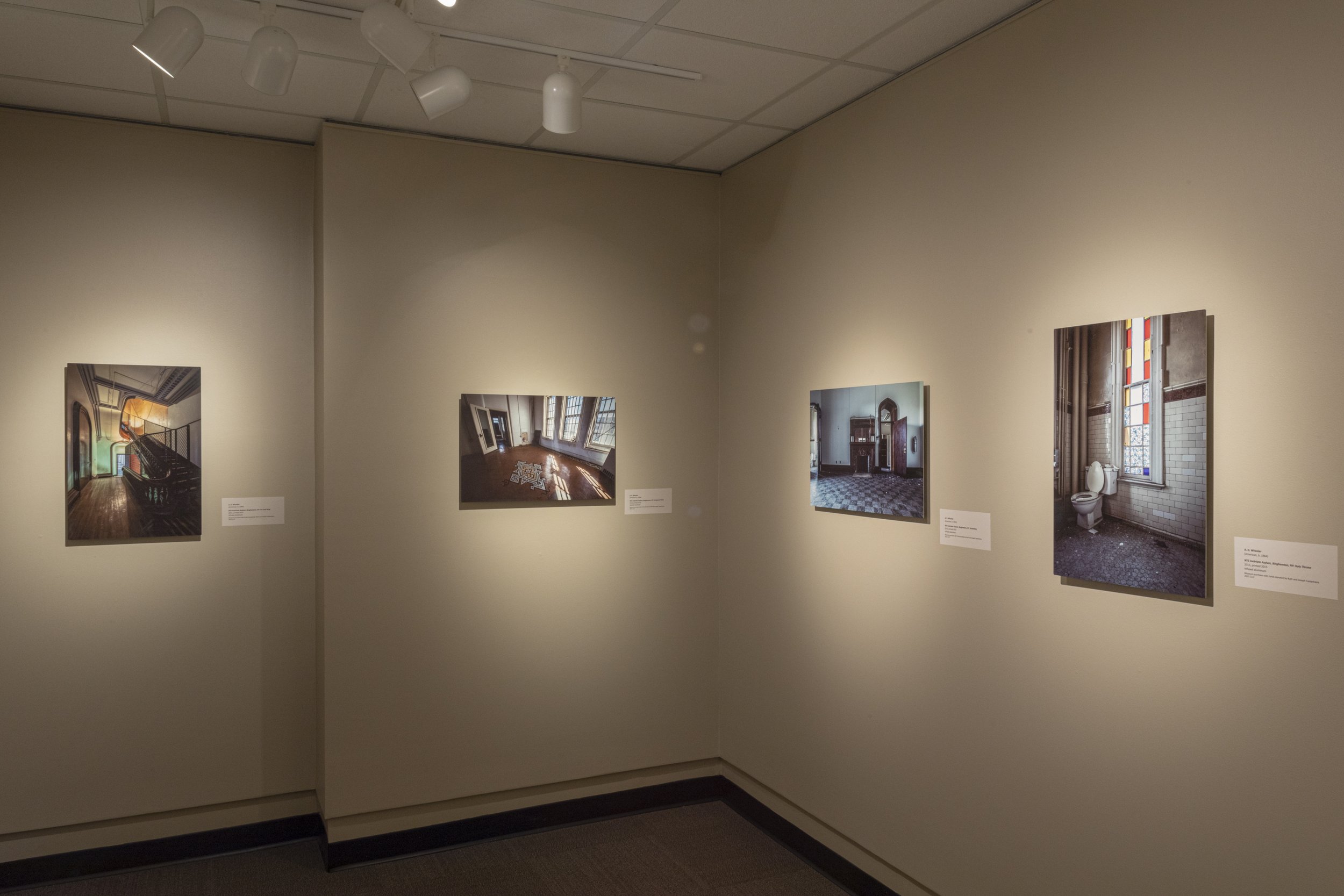

Installation photographs courtesy of Marc Newton
Founded by Dr. Joseph Edward Turner in 1858, the New York State Inebriate Asylum in Binghamton was the first medically directed addiction treatment center in the United States. Turner chose Isaac Gale Perry, a relatively inexperienced architect, to design the building. Still, the experience launched his career, and he is responsible for several other important buildings around Binghamton, including the Phelps Mansion, Centenary Methodist Church, and the Perry Building. Perry’s resulting building, a magnificent Gothic Revival “castle,” is situated on a 200-acre hilltop above the city of Binghamton. Its quasi-medieval grandeur with hand-carved staircases, stained-glass windows, and turrets underscore the lofty goals of the institution, as well as the taste of the wealthy clients whom they hoped to attract.
Turner developed an interest in alcoholism as a medical student and spent years championing the idea of a publicly funded hospital for the treatment of inebriety at an asylum “where cases could be secluded, housed, and treated.” After a few years of study, Turner presented his plan and sought a charter from the New York State legislature for the institution. Turner circulated a pamphlet seeking subscriptions or pledged contributions, stating:
The object of the institution is to provide an asylum for the poor and destitute inebriate, where his physical and moral condition will be alike the care of the physician and philanthropist, and where his labor may be rendered productive and of service to his family. With the asylum will be connected Workshops to make the institution self-sufficient and relieve prisons and almshouses.
His efforts to realize his vision repeatedly ran into obstacles, including strong opposition from religious and temperance groups, who refused to consider alcohol addiction a medical disorder, and a skeptical state legislature. After the asylum finally opened, funded partly by alcohol-related tax revenues, Turner and other doctors became embroiled in a power struggle over treatment philosophy. At the same time, patients and family members bristled at what they considered excessive rules and regulations. Within three years, Turner was forced out, and the hospital ceased to function as an institution specializing in the care of inebriates in 1879 when the Governor declared it a “complete failure.”
Denouement of the “Castle”
The hospital reopened in late 1879 as the Binghamton Asylum for the Chronic Insane, with patients transferred from asylums in Utica, Poughkeepsie, and Middletown. As practices evolved, the site shifted its name several times, first to the Binghamton State Hospital (1890) and later to the Binghamton Psychiatric Hospital (1974). It was a beautiful backdrop for sometimes harrowing and brutal experiences. While the patients were voluntarily committed during its time as an inebriate asylum, that was rarely the case when it shifted to a facility for the “chronic insane.” Here, patients endured treatments including electroshock therapy, hydrotherapies, prefrontal lobotomies, and drug therapy, too often, merely to subdue and control. The number of patients at the site began to decline in the 1960s. By the 1990s, many patients were deinstitutionalized, like many other psychiatric patients around the country. In 1993 the building was closed. Designated as a National Historic Landmark, Binghamton’s majestic “Castle on the Hill'' now stands silent and abandoned.
We encourage you to think about those many patients who crossed the Castle’s threshold throughout its history and their long-silent voices in relation to the exhibition in the Main Gallery, Michal Heiman: Chronically Linked.

